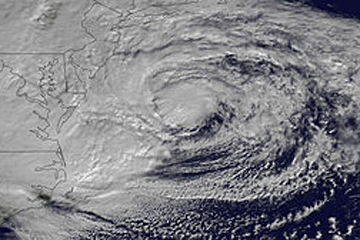Funding to Allow Better US Hurricane Prediction Following Sandy

This article was provided by AccuWeather.com.
Congress approved supplemental funding of $23.7 million to the National Weather Service (NWS) for improvements to their forecasting computers in Reston, Va., and Orlando, Fla.
The funding is provided under the Disaster Relief Appropriations Act of 2013. Chris Vaccaro Spokesman for the NWS said while there were already plans to upgrade the computers, the additional funding will allow more improvements than were planned.
"Currently, our computers are operating at 90 teraflops," Vaccaro said. "The GFS and Super Computers will be upgraded to 213 teraflops by August." A teraflop is designated as one trillion floating-point operations per second. The term is a measurement of compute capacity describing the number of operations on floating-point numbers a system can perform in one second.
RELATED: Watching Gulf, Caribbean for Slow Tropical Development Atlantic Hurricane Season: Three US Landfalls Predicted
Vaccaro said the European forecasting computers have an operating capacity of 185 teraflops currently. These forecast models are often considered more accurate than the U.S. models. With the planned upgrades to the U.S. models, that could change.
AccuWeather CEO Barry Myers testified May 23, 2013, at a congressional hearing called Restoring U.S. Leadership in Weather Forecasting. During Superstorm Sandy, the ECMFW (European) model outperformed U.S. forecasting models in predicting the storm's track. Myers said, "This gap presents issues from an economic, safety and national security standpoint. Relying on other countries, for better weather models, places America in a weak and subservient position."
Sign up for the Live Science daily newsletter now
Get the world’s most fascinating discoveries delivered straight to your inbox.
Vaccaro said, "By the end of the next fiscal year, our computers will be upgraded to an operating capacity of 1,950 teraflops." With increases to the capacity of the GFS and Super Computers, models will have better resolution images.
"We will have the ability to predict high impact storms further into the future with greater accuracy," said Vaccaro.
AccuWeather.com. All rights reserved. More from AccuWeather.com.









